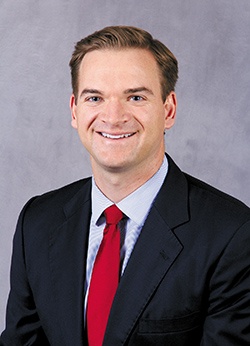Northwest Arkansas Apartment Market: Occupancy, Rental Rates Still On the Rise
by February 15, 2016 12:00 am 201 views

There’s never been a better time to be a landlord in Northwest Arkansas, and that doesn’t appear to be changing any time soon.
The occupancy rate among apartments in Benton and Washington counties stood at 98.5 percent at the end of 2015, up slightly from 98 percent reported one year ago, and well ahead of the national average of just below 95 percent.
At the same time, landlords increased overall rental rates in Northwest Arkansas by 3.8 percent last year.
Among the area’s four largest cities, Springdale had the highest occupancy rate at 99 percent, up from 97.5 percent at the end of 2014.
The average occupancy rate among multifamily properties in both Fayetteville and Rogers was 98.5 percent.
Bentonville’s average occupancy was the only submarket that dropped, lowering to 97.5 percent from 98 percent one year ago.
The numbers come from a new apartment survey released in January by CB Richard Ellis Inc. in Tulsa, which tracks activity in the multifamily market in Northwest Arkansas.
Brian Donahue, a multifamily specialist with CBRE, said the survey includes more than 22,000 of the 32,000 apartment units in the market, excluding smaller properties that have less than 50 units.
Donahue noted that the record high occupancy rates and rental increases were recorded despite the fact that four multifamily properties and 800 units were dropped into the market in 2015.
Projects completed last year were:
• Thrive Bentonville – 62 units, Bentonville
• The Trails at Bentonville – 487 units, Bentonville
• Woodlands at Creekside – 50 units, Bentonville
• The Promenade Apartments at Pinnacle Hills – 200 units, Rogers
“It’s a pretty unbelievably strong apartment market right now in Northwest Arkansas,” Donahue said.
A Growing Attraction
As rents and occupancy rates push higher, that translates into more profits for companies that own and operate apartment buildings and other properties.
Donahue said that’s why investors are clamoring to enter the multifamily market, either by way of acquisition or new construction.
In 2015, there were 14 multifamily properties that sold to a new owner, up from 12 in 2014. Those 14 purchases had an average sale price of $74,000 per unit, and increase of 75 percent from 2014 and the highest rate since 2008.
One notable deal included a joint venture between Balfour Beatty Communities of Pennsylvania and Block Multifamily Group of Missouri, who purchased the 392-unit Ranch at Pinnacle Point development in Rogers for $41.1 million, a purchase price of roughly $104,846 per unit.
Also in Rogers, RPD Catalyst of Beverly Hills, California, paid roughly $28.5 million for 238 of the 254 units at the Stone Manor at Pinnacle Hills, which equaled about $119,747 per unit.
Those acquisitions were completed in the first quarter. In the fourth quarter of 2015, a subsidiary of Block Real Estate Services, a longtime leader in Kansas City commercial real estate development, bought the 280-unit Stoneleigh Apartments in Centerton for $22.57 million, which equaled $80,625 per unit.
Those three deals alone combined for about $92 million of the $141 million spent on multifamily transactions in the two-county area in 2015.
In his report, Donahue wrote: “We expect transaction volume to level off to some degree, but still exceed historic norms as demand for multifamily investments continues to remain extremely high. Private capital will continue to dominate investment activity across Northwest Arkansas.”
In terms of new construction, there are seven multifamily developments in various stages of planning and construction in the two-county area.
Those projects will introduce an additional 1,944 units into the market over the next two years.
Because of the relative lack of new market rate apartment construction during the last few years — there were no new properties built in 2014 — Donahue said pent up demand and population growth will keep occupancy rates high in the market.
“Even with the potential for more than 1,900 units to come online over the next two years, which is 6 percent of the existing supply, we do not expect occupancies to drop below 95 percent,” he said.
Donahue also explained that tenants may soon see rental rate increases decline to around 2 percent as the units come online, with rent specials — something that was virtually non-existent across Northwest Arkansas in 2015 — becoming more prominent.|
“From a tenant standpoint, it’s exciting because there is new product coming online,” he said. “Yes, rents are up, but with the new product, the quality of what someone is going to be able to lease is going to be worth what they are going to pay for it. It’s nice to have apartments available.”
